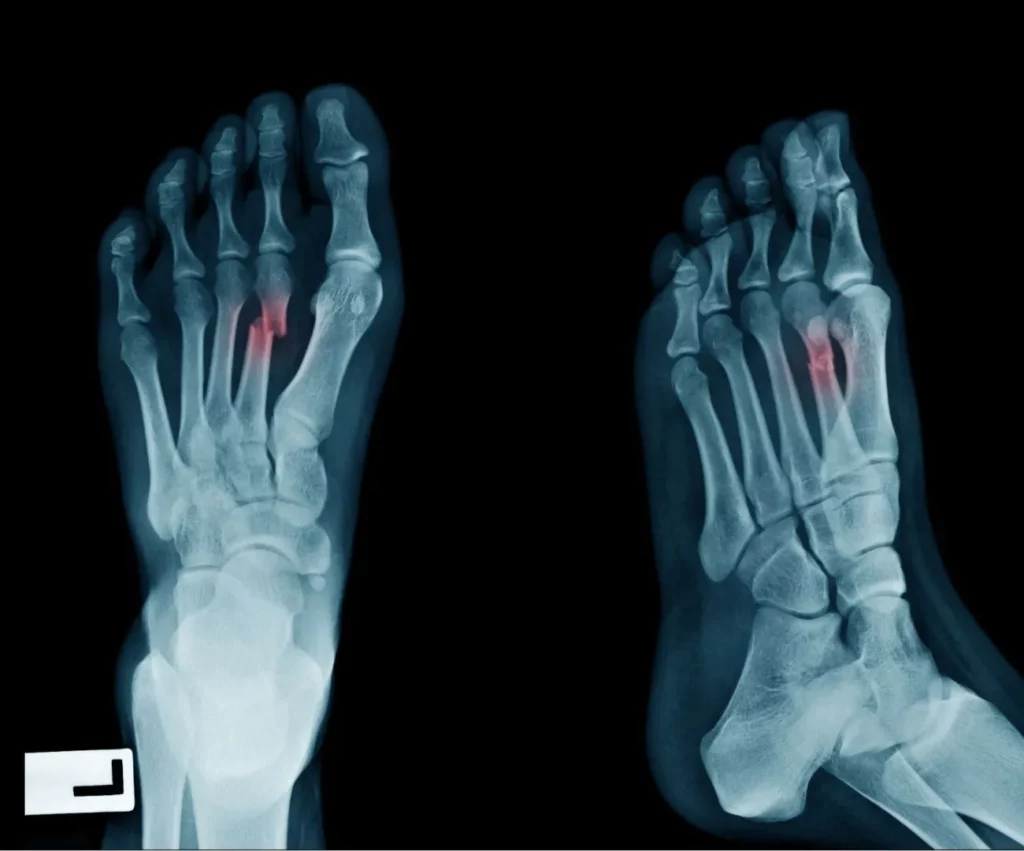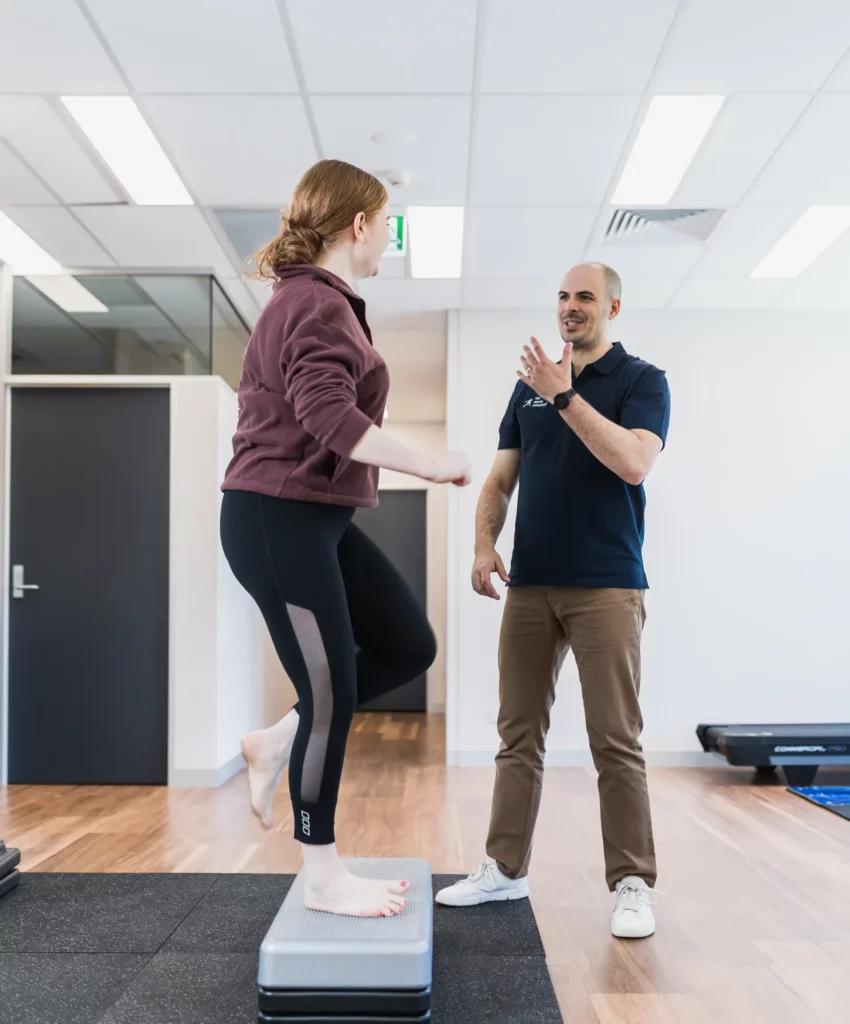Stress Fractures / Traumatic Fractures

Symptoms
There are two main types of fractures. Traumatic fractures and stress fractures.
Traumatic fractures are when a significant or extreme force is applied to a bone, beyond what is capable of tolerating, causing it to break. Common causes include falls, car accidents, but can also be in twisting injuries such as ankle sprains.
Stress fractures, more often known as bone stress injuries or BSIs, are the opposite of traumatic fractures. Instead of a large force causing the bone to break, it’s where repeated forces or ‘stress’ are placed on the bone over time, which is more than it is able to tolerate.
Compared to other conditions, stress fractures feel like pinpoint pain, can feel sharp or like a deep ache, hurt when you put pressure on your foot or ankle, get better with rest and can often have a bit of swelling in the area.
They commonly occur in sport where training is suddenly increased well beyond what the bone is able to recover from (e.g. returning to sport after a break, increasing training for competition), where there is limited time for the bone to recover and become stronger (e.g. starting to train every day).
It can also occur when the body’s ability to repair bones after exercise is reduced. This can be due to long term use of specific medications, hormone imbalances, rare medical conditions, or most commonly, in women who have or are past menopause.
How our services can help with this condition
All types of fractures require a period of time immobilised in a boot or cast in order for the fracture to heal. This is followed by a period of exercise rehabilitation, to rebuild the strength in the muscles and tendon lost when not moving, as well as the strength in the bone which is reduced for a period of time after fracture.
If you suspect you’re suffering from a stress fracture, I’m able to help identify, diagnose and order the imaging to confirm its presence. I am then able to provide an immobilisation boot, help you get used to wearing one and help determine when to come out of the boot.
(For traumatic fractures, I advise people to go to the emergency room at their local hospital. Many traumatic fractures require a specialist opinion and this is the best and fastest way to get this care).
For all fracture types I’m able to assist with complete rehabilitation of your foot and ankle and getting you back to physical activity.
This includes prescribing and coaching you through exercises to improve your muscle and bone strength, guiding your return back to sport/physical activity as well as adjusting your training program to prevent the stress fractures reoccurring (if applicable) and specific injury prevention training.
For those who’ve suffered from a stress fractures, we may also consider footwear and or foot orthoses can help reduce bone overloading, in recovery as well as preventing future injury.

